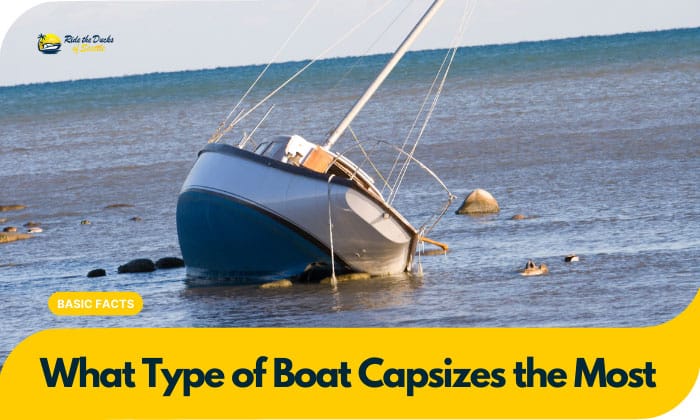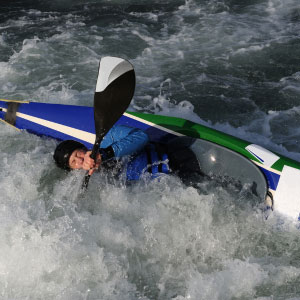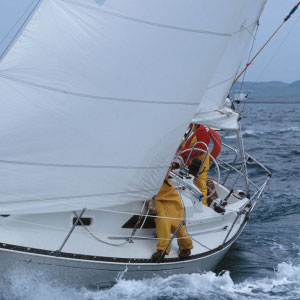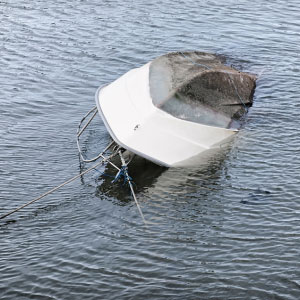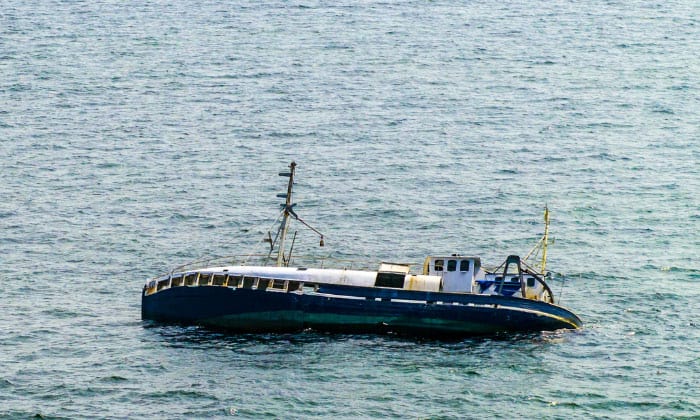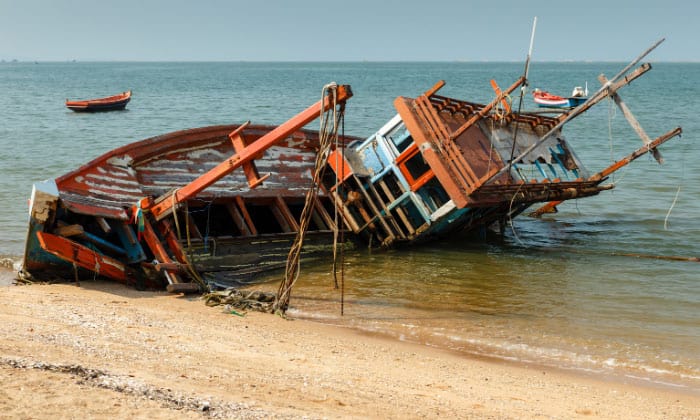The type of boat that’s prone to capsizing the most is a small boat–in particular, small boats like kayaks, canoes, and sailboats. Small boats can easily get unstable because they are designed only to support a limited amount of weight.
There are many different types of boats. Some are fishing boats, deck boats, houseboats, dinghy boats, jet boats, motor yacht boats, and ski boats. Let’s dive deeper into what type of boat capsizes the most and more below.
Table of Contents
What Happens When a Boat Capsizes?
Many might ask, what is a capsized boat called? You might encounter terms such as keeling or capsizing that refer to the vessels that encounter such accidents.
Keeling over occurs when a boat capsizes. This happens as a boat or ship is thrown on its side or farther by waves, instability, or wind force.
What Kind Of Boat Capsizes The Most?
In fact, ship capsizing can happen as a result of various issues. Extra heavy cargo, poor weight distribution, or a loose drain plug may contribute to a boat’s capsizing.
Below are the types of boats that face these incidents the most frequently:
1. Kayaks
Prone to capsizing, kayaks are about 10-foot long with an average weight limit of 250-350 pounds and they are difficult to paddle in strong currents caused by intense winds. They risk capsizing with just a wave that’s 55% of their length.
It is unsafe for a kayak to travel in winds that exceed 17 hknots, or 20 mph. The direction of a kayak can shift rapidly in swift wind. Because kayaks cannot survive without boat control, it’s essential to understand how your movements and paddle strokes determine your kayak’s stability in the water.
2. Sailboats
Speed and weather are the two most common causes of capsizing for sailboats. You’re more likely to tip over at greater speeds and even more so when you encounter a big wave while you’re going fast.
Depending on size, a sailboat can hold 1,000-5,000 pounds of weight–however, more weight can always lead to capsizing in bad weather conditions.
3. Canoes
Like kayaks, canoes can capsize easily due to paddling mistakes; proper boat control is crucial for such small vessels. Canoes also tend to tip over when they are turned sideways in a fast current.
Factors Affecting Boat Capsizing Rates
Bad weather, overloading, unsafe handling, lack of vessel maintenance, inappropriate anchoring, loss of power, or machinery failure onboard can all lead to capsizing. Shifting cargo, collisions (with ships, docks, bridges, rocks, and reefs), human error, and flooding are also huge factors.
Tips To Prevent Boat Capsizing
- Don’t fill up your boat
- Make sure the weight of all passengers and equipment is balanced.
- With controlled speeds, turn the vessel.
- Never tie the anchor line to the stern of the boat when anchoring.
FAQs
Major Cause Of Fatalities Involving Small Boats
Falling overboard is a type of boating emergency that causes the most fatalities. Drowning after falling from a capsizing vessel is a major cause of death when it comes to small boats.
Recreational boating accidents like sailboat capsizing are quite common.
What Should You Do First When A Vessel Capsizes?
The first thing to do in a capsizing boat is to try not to panic and try to think straight. Make sure no one is injured, then prepare the personal flotation devices. Also, make use of distress signals to ask for help.
Keep your head above water. Unless you are a very strong swimmer or a really close shore nearby, never try swimming. People often underestimate their ability to swim or a shore’s proximity when in water.
When a boat capsizes and floats, you may try to flip your boat upright by standing on the centerboard and grabbing a rail. You may also cling onto your boat and sit on top if possible.
Hardest Boat To Capsize
Large boats built for the Navy, law enforcement, and other groups that sail in high-pressure conditions rarely suffer from capsizing. Many often mention “the Thunder Child” as a boat that never capsizes.
Conclusion
Small boats like sailboats, kayaks, and canoes are more prone to capsizing compared to others.
Recreational boating accidents are common as they usually involve small boats. Bad weather, collisions, lack of vessel maintenance, and inappropriate anchoring, may all lead to capsizing.
When a boat capsizes, try your best to keep your head above water. Don’t panic, hold onto your boat, and prepare floating devices and distress signals.
Now that you know what type of boat capsizes the most, you’re more prepared than ever! Choose the right boat and you’ll be extra safe.

Ten years of enjoying countless trips on boats never made me love them any less! So I am here to put all those experiences into good use for other boaters who want to have a safe and fun trip with their friends and families.

